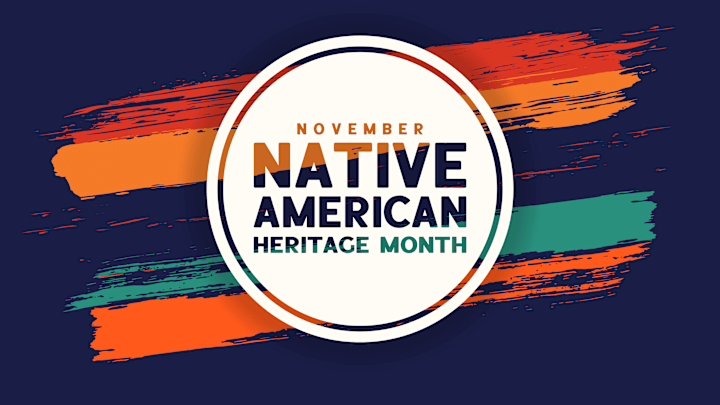Thanksgiving and Veterans Day aren’t the only major holidays that happen in November. This month is also Native American Heritage Month—a time to remember that American history began long before settlers stepped foot on the continent, and to celebrate the many cultures and contributions of the country’s Indigenous peoples. Here are a few fascinating facts about how the commemoration came to be.
- The Boy Scouts were among the first to celebrate a day for the “First Americans.”
- Red Fox James rode 4000 miles on horseback to garner support for the cause.
- The push for a national holiday was related to civil rights.
- Gerald Ford was the first president to designate a “Native American Awareness Week.”
- George H.W. Bush was the president who extended the Native American celebration to last a whole month.
The Boy Scouts were among the first to celebrate a day for the “First Americans.”

Arthur Caswell Parker, a member of the Seneca Nation and the great nephew of Ulysses S. Grant’s secretary during the Civil War, was one of the most prominent advocates of Native American rights throughout the early 20th century. (He also served as an ethnologist for the New York State Library, an archaeologist for the New York State Museum, and the director of New York’s Rochester Museum of Arts and Sciences.) In addition to founding the Society of American Indians and the National Congress of American Indians, Parker lobbied the Boy Scouts of America to recognize the country’s Indigenous peoples with an annual holiday. His efforts proved successful; from 1912 to 1915, the Boy Scouts celebrated a day for the “First Americans.”
Red Fox James rode 4000 miles on horseback to garner support for the cause.

In March 1914, Red Fox James—believed to be a member of the Blackfeet Nation, though sometimes linked to the Crow Nation—embarked on a cross-country horseback ride from Montana to Washington, D.C. to ask that President Woodrow Wilson make October 12 a national holiday for Native Americans. Along the way, he collected signatures from governors, senators, and other officials to endorse the motion. Though James did meet with Wilson upon arrival in mid-December, there’s no evidence that Wilson ever issued a proclamation.
You May Also Like ...
- 11 Common English Words That Come From Native American Languages
- 20 Essential Books by Indigenous Authors
- 11 Ancient Native American Earthworks You Can Visit
Add Mental Floss as a preferred news source!
The push for a national holiday was related to civil rights.

James headed to the White House again in 1915, this time to petition the president to grant citizenship to Native Americans. That same year, the Congress of the American Indian Association decided to hold an annual “American Indian Day” on the second Saturday in May. The organization’s president, a member of the Arapaho Tribe named Sherman Coolidge, made an official declaration in September 1915—but it wasn’t just about a day of recognition. In his proclamation, Coolidge also advocated for Native American citizenship. In June 1924, Congress finally passed the Indian Citizenship Act, giving citizenship to all Native Americans born in the U.S. Since voting rights rested with state governments, however, many Native American citizens still weren’t allowed to vote until the 1950s.
Gerald Ford was the first president to designate a “Native American Awareness Week.”

Following the efforts of Parker, James, Coolidge, and others, some states began honoring Native Americans with an annual day. New York was the first to do so, celebrating American Indian Day on the second Saturday in May 1916. Other states chose the fourth Friday in September. But the holiday wasn’t recognized by the White House until 1976, when Congress asked President Gerald Ford to honor the contributions of Indigenous peoples with a Native American Awareness Week from October 10 to October 16.
“In renewing the spirit and determined dedication of the past 200 years we should also join with our Native Americans in rebuilding an awareness, understanding, and appreciation for their historical role and future participation in our diverse American society,” Ford wrote in a proclamation.
George H.W. Bush was the president who extended the Native American celebration to last a whole month.

Ronald Reagan kept up the tradition during his years in office, beginning with American Indian Day on May 13, 1983, and eventually landing on National American Indian Heritage Week in late November 1988. In 1990, Congress passed a resolution asking President George H.W. Bush to designate all of November as National American Indian Heritage Month, which he did. Since then, it’s become customary for the sitting president to issue a similar decree each fall, though the month is now usually referred to as National Native American Heritage Month or National American Indian and Alaska Native Heritage Month.
A version of this story originally ran in 2020; it has been updated for 2025.
